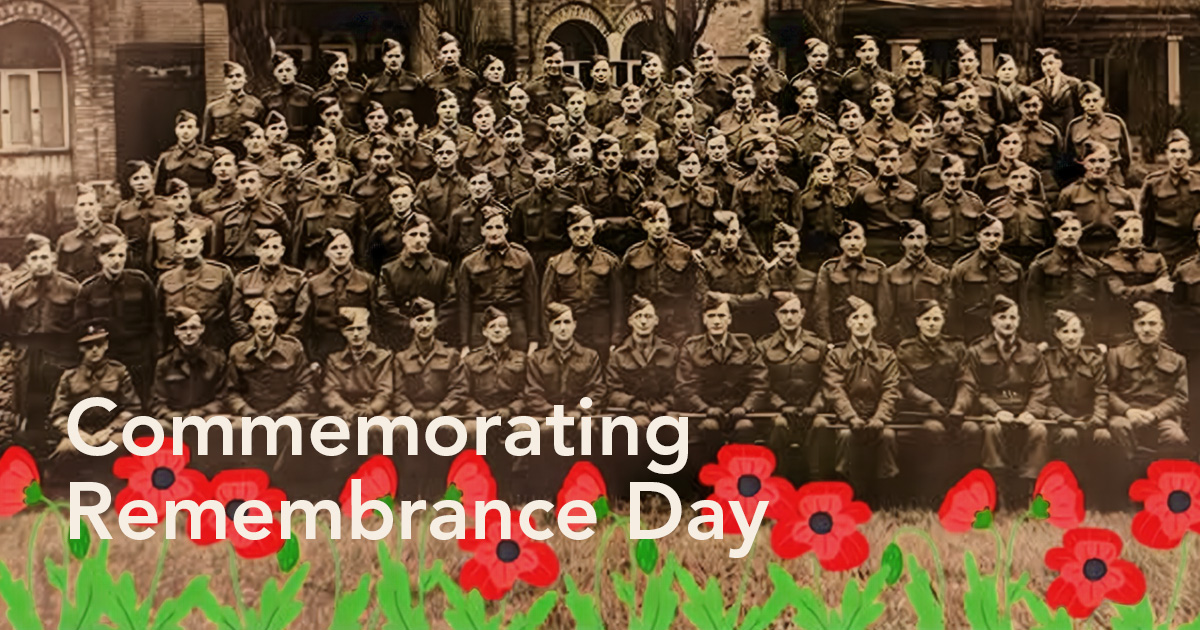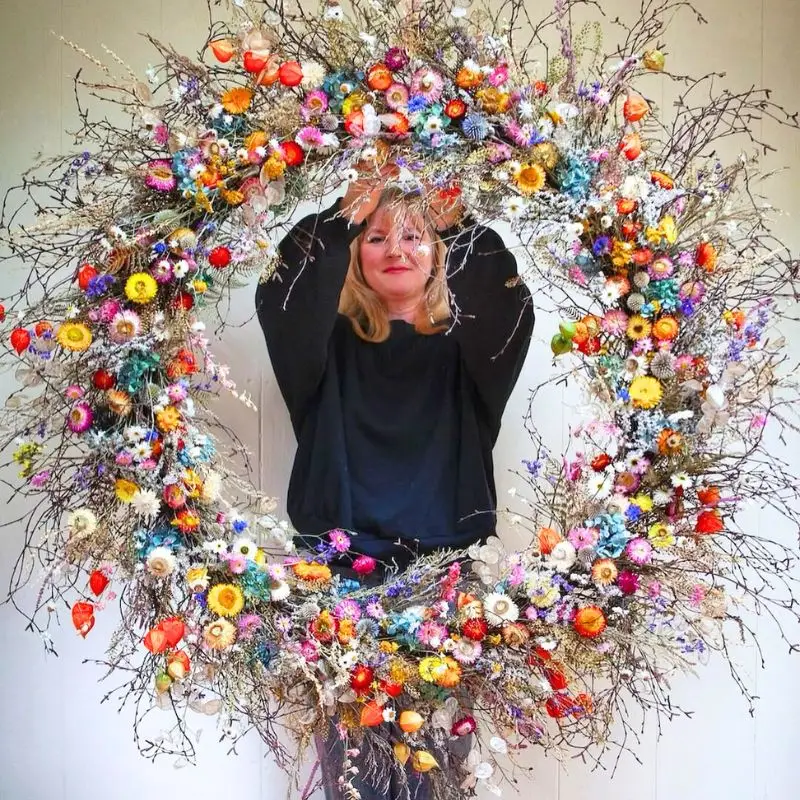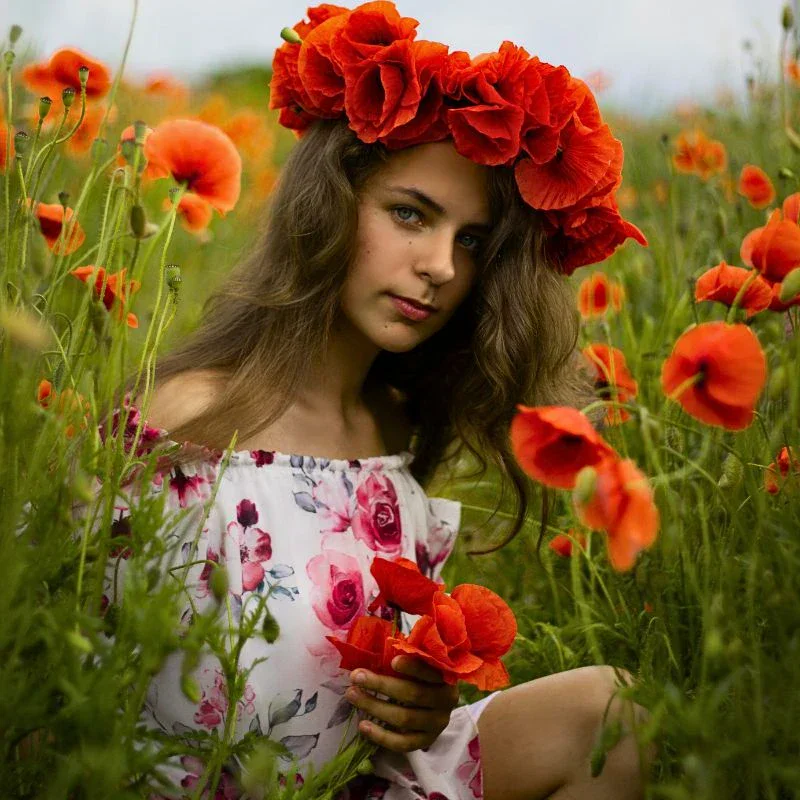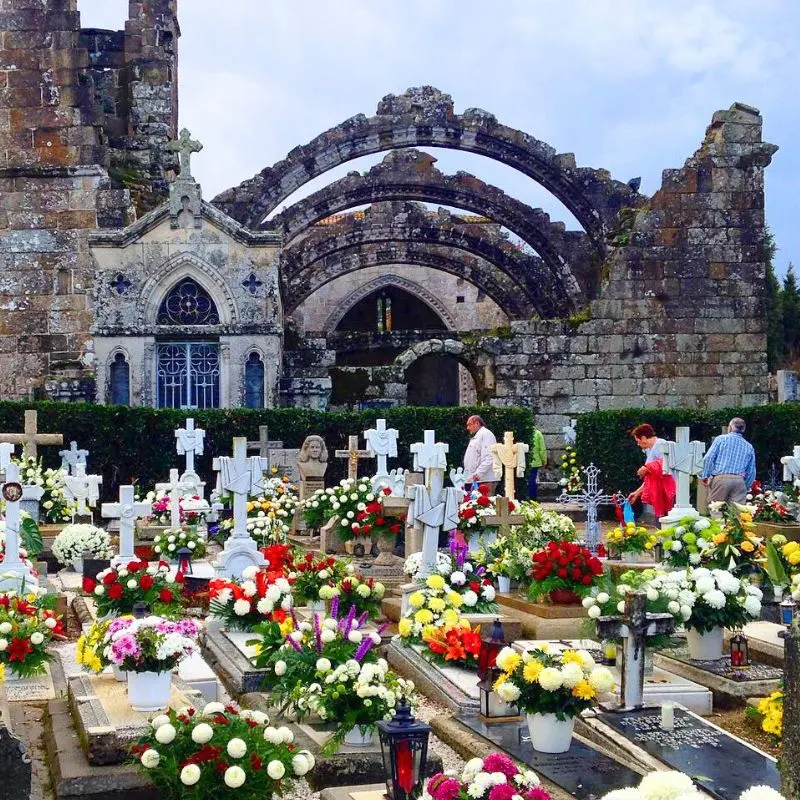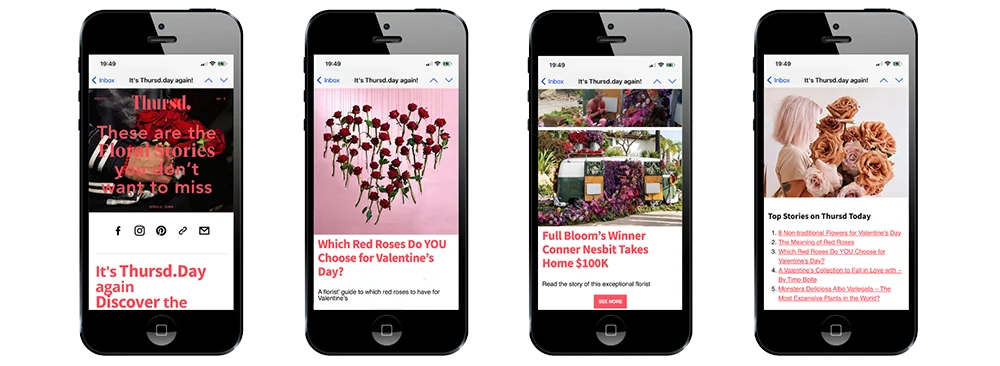For royal fans who don't live across the pond, British traditions and holidays can be a bit hard to understand at first glance. On Remembrance Day, for example, why are all the royals wearing paper poppy brooches on their clothes? Why does the queen wear more poppies than, say, Kate Middleton or Prince Harry? And what's Remembrance Day, anyway? Here, we track down the origin of wearing poppies on this memorial holiday.
What is Remembrance Day?
Remembrance Day, observed every year on November 11, honors the sacrifices made by members of the Armed Forces in the line of duty. Initially known as Armistice Day, it marks the anniversary of the armistice signed in 1918 that ended the fighting in World War I. This day is now recognized across the Commonwealth nations, including the UK, Canada, Australia, and New Zealand, as well as in other countries around the world.
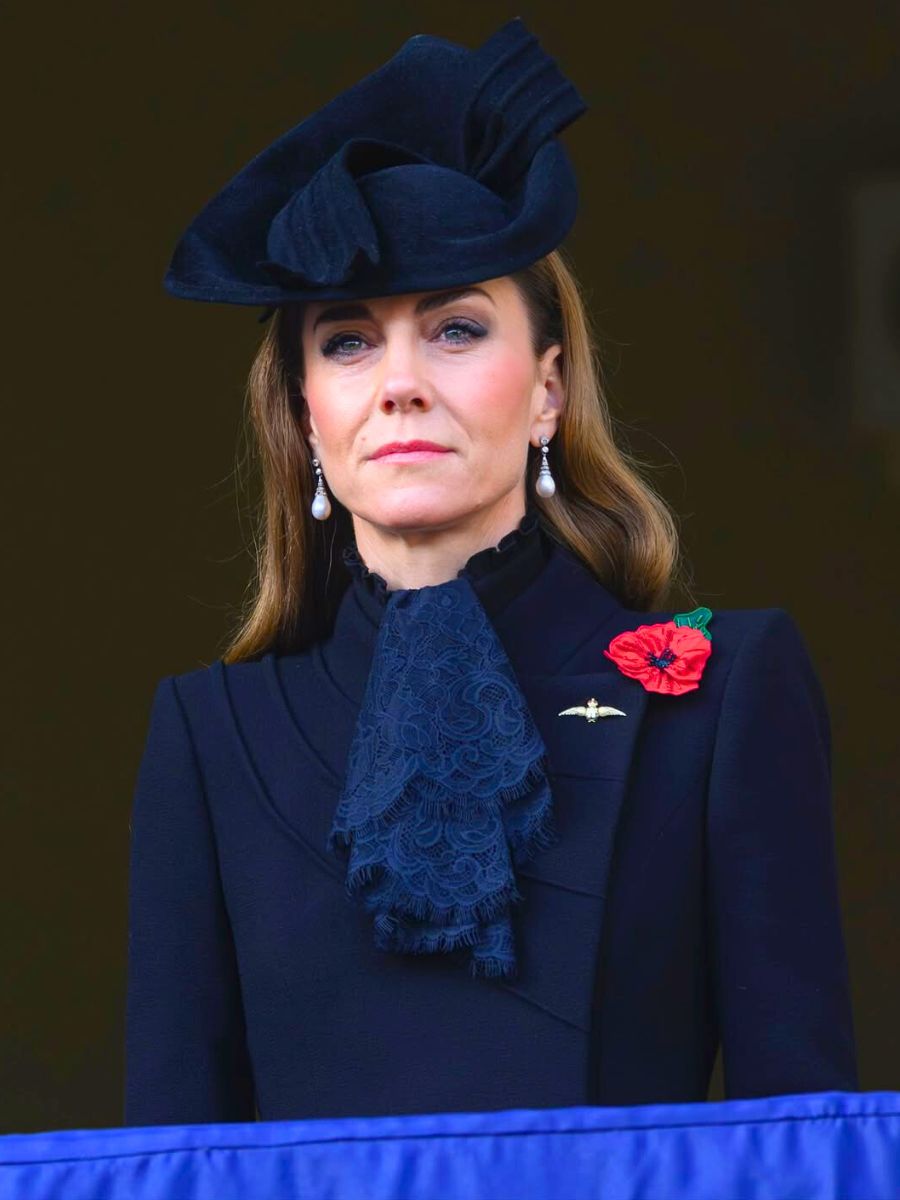
Remembrance Day allows people to reflect on the cost of war and the importance of peace. It encourages communities and individuals to come together in solemn remembrance, showing respect for those who lost their lives in World War I, World War II, and other conflicts since. The day's observance includes a two-minute silence at 11:00 a.m., symbolizing the moment when the guns of World War I fell silent on the "eleventh hour of the eleventh day of the eleventh month."

Origins of the First World War and Armistice Day
Remembrance Day, originally known as Armistice Day, marks the anniversary of the armistice signed on November 11, 1918, which ended World War I. This agreement officially ceased hostilities between the Allied nations and Germany after more than four years of intense and devastating warfare. The "Great War," as it was then known, left deep scars on nations and families, with countless lives lost or forever changed.
.jpg)
The Royal British Legion, founded in 1921, helped formalize Remembrance Day to honor the fallen soldiers of World War I. This annual day of reflection was established to recognize the contributions and sacrifices of those who served in the Armed Forces. In later years, Remembrance Day expanded to include not only those who died in World War I but also in World War II and other subsequent conflicts involving the British and Commonwealth forces.
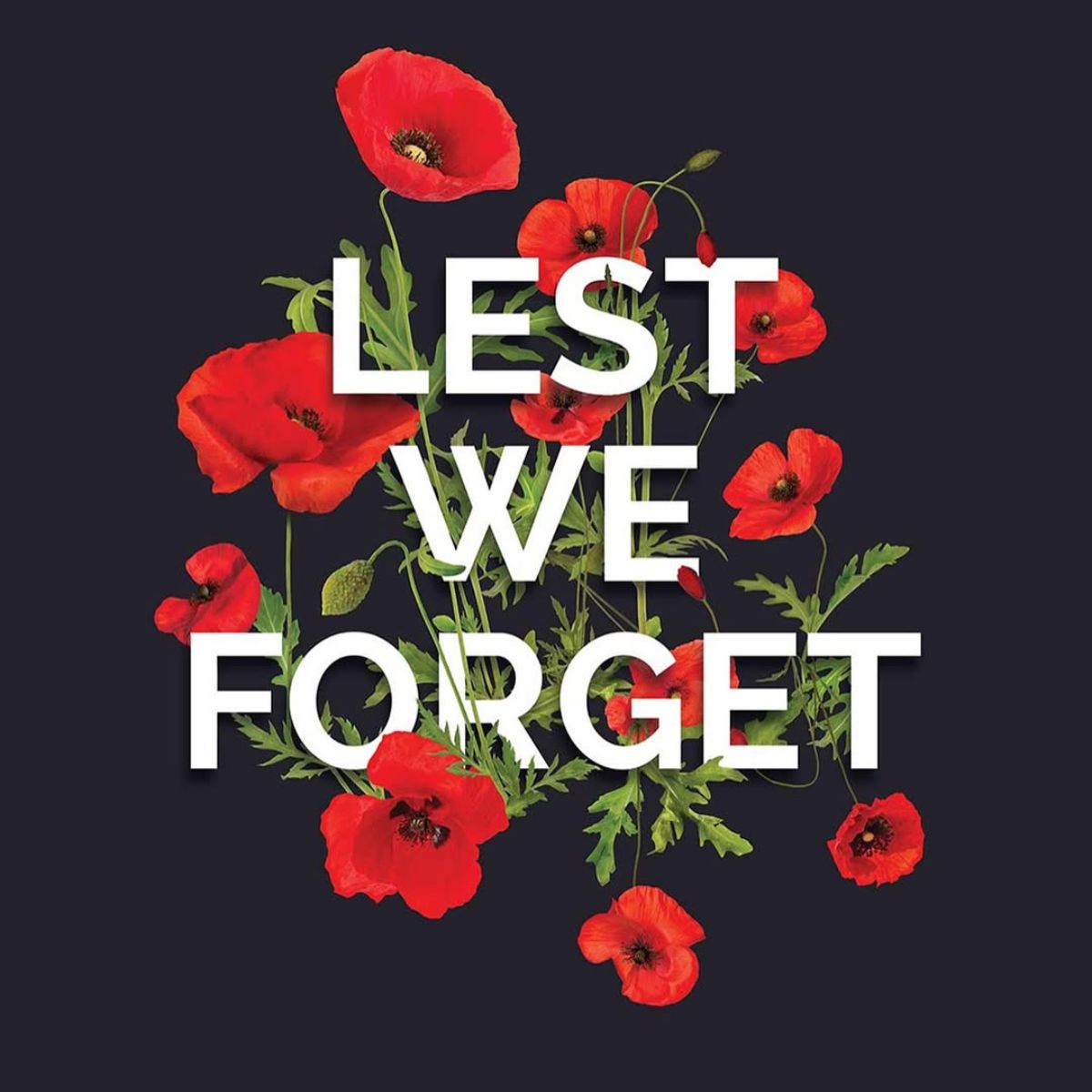
Photo: @limitless_ev
Importance of the Eleventh Hour on the Eleventh Day
The armistice signed at the "eleventh hour of the eleventh day of the eleventh month" is an important moment that remains central to Remembrance Day observances. Every November 11 at 11:00 a.m., people across the United Kingdom and Commonwealth nations observe a two-minute silence. This solemn pause serves to honor the moment when peace was finally achieved after years of devastation. The phrase "eleventh hour" has come to symbolize both the last-minute nature of the armistice and the final sacrifices made by soldiers. This tradition of silence was observed in 1919, a year after the war ended, and it continues today as a reminder of the lives lost and the peace achieved.

Why Remembrance Day is Important in the United Kingdom
Remembrance Day holds deep significance in the United Kingdom as a national day of reflection. Each year, people from all walks of life come together to honor the sacrifices of those who served in the Armed Forces. The poppy, adopted as a "symbol of remembrance," has become an enduring emblem of respect for those who have served and those who continue to serve the country. The Royal British Legion plays a pivotal role in organizing Remembrance Day events, including ceremonies and parades, that allow people across the nation to pay their respects.

By honoring these sacrifices, Remembrance Day serves as a reminder of the cost of war and the importance of striving for peace. It also raises awareness about the ongoing needs of veterans and their families, emphasizing the importance of support for those who face physical and mental health challenges after their services.
Did you know - poppy is also associated with a zodiac sign? Read this article to find out!

A National Holiday Observed Across the Commonwealth
While Remembrance Day itself is not a public holiday in the UK, it is widely observed across the country and other Commonwealth nations. The Royal British Legion, along with various local and national organizations, arranges Remembrance Day ceremonies, including the National Service of Remembrance at the Cenotaph in London. Commonwealth countries, such as Canada and Australia, also observe the day as a "symbol of remembrance" for their veterans and fallen soldiers. Remembrance Sunday, held on the second Sunday of November, is an additional day of remembrance with its own ceremonies, allowing even more people to take part in paying tribute to the Armed Forces.
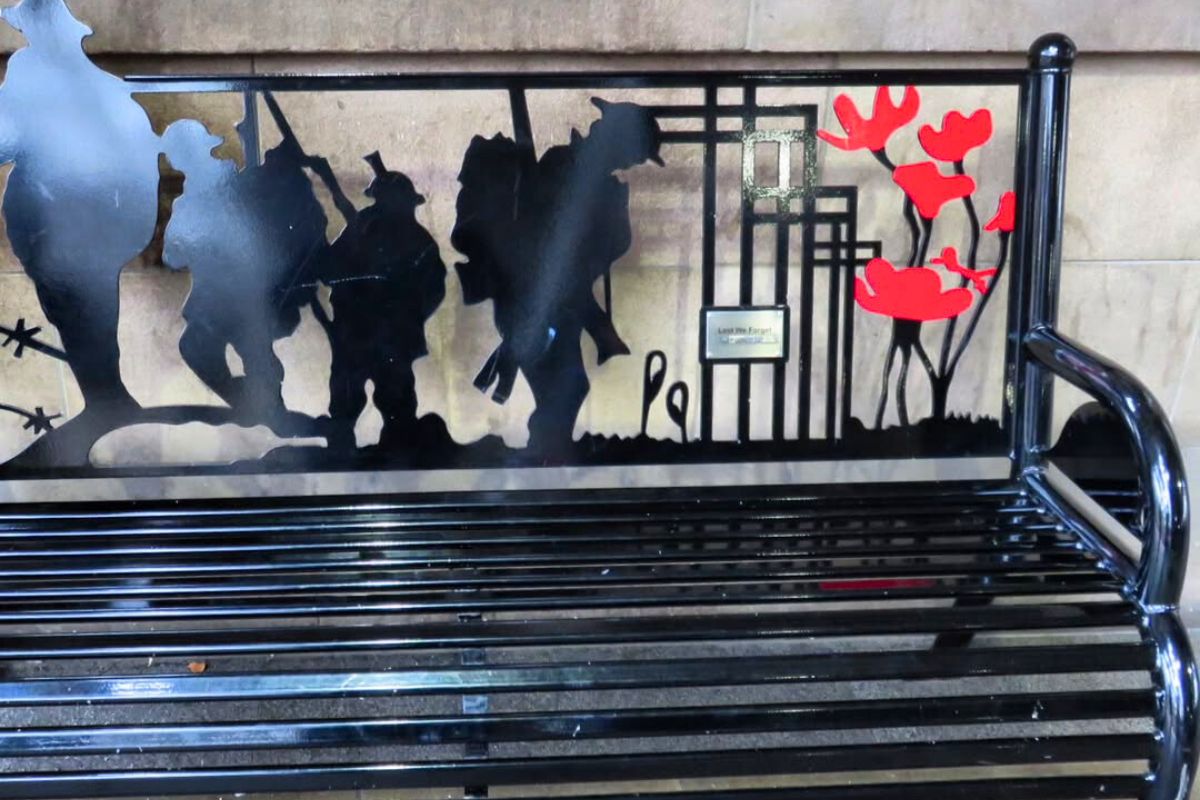
The Royal Family's Role in Remembrance Day Observance
The Royal Family has long held a prominent role in Remembrance Day observances in the United Kingdom. As representatives of the nation, members of the Royal Family participate in key ceremonies, wearing poppies as a show of solidarity with the public and honoring the Armed Forces. Their involvement underscores the importance of Remembrance Day and serves as a reminder of the close ties between the monarchy and the military.

Attendance at Ceremonies and Memorial Services
Every year, members of the Royal Family participate in the National Service of Remembrance at the Cenotaph in Whitehall, London. This solemn ceremony, organized by the Royal British Legion, includes a wreath-laying ceremony, a two-minute silence, and a parade of military personnel and veterans. The royal presence emphasizes the importance of Remembrance Day to the nation and demonstrates their commitment to honoring the Armed Forces and veterans.
Senior royals, including the King, Queen Consort, and the Prince and Princess of Wales, are regularly seen at official armistice events, wearing red poppies and taking part in ceremonies. Their participation in these events reflects the close connection between the monarchy and the Armed Forces, reinforcing the unity and support of the Royal Family toward those who serve.
Queen Elizabeth's Tradition of Wearing Multiple Poppies
Queen Elizabeth II, who had a special bond with the Armed Forces, often wore multiple poppies on her lapel during Remembrance Day ceremonies. Although the exact reason for this is not officially explained, many believe it was to signify respect for the various branches of the Armed Forces or to show extra remembrance for those who lost their lives. Wearing multiple poppies may also have represented the Queen's strong connection to veterans and her dedication to honoring their memory. Her visible respect for Remembrance Day set an example for other members of the Royal Family and the public, making her a key figure in the annual observance.
Today, the Royal Family continues this tradition, with each member wearing a poppy as a "symbol of remembrance." The Royal Family's commitment to this day underscores the importance of remembering the sacrifices of those who served and continue to inspire the nation's respect and appreciation for veterans and the Armed Forces.

The Royal Support - Partnership With the Royal British Legion in Promoting Remembrance
The Royal British Legion has played a crucial role in establishing and maintaining the tradition of wearing poppies in the United Kingdom. Since its founding in 1921, the organization has been dedicated to supporting veterans, especially those impacted by the first world war, and their families. The Royal Family’s support for the Legion’s work has been instrumental in popularizing the poppy as a "remembrance poppy" and a lasting "symbol of remembrance" across the nation.
The partnership between the Royal Family and the Royal British Legion extends to official armistice day events, such as the annual National Service of Remembrance at the Cenotaph in London. Each year, on November 11, members of the Royal Family gather alongside government officials, military personnel, and the public to honor the fallen.
This visible royal support emphasizes the importance of veterans affairs and ensures continued national engagement with Remembrance Day traditions. The Queen Consort, Prince and Princess of Wales, and other royals participate in memorial services and attend significant events organized by the Royal British Legion, underscoring the commitment to honoring past and present service members.

How the Royals Inspire Public Participation and Poppy-Wearing
The Royal Family’s role in Remembrance Day has been pivotal in encouraging public participation in wearing poppies. By prominently displaying poppies in ceremonies and public appearances, the royals reinforce the red poppy as a respectful symbol to remember those who served in world wars and other conflicts. Queen Elizabeth II’s tradition of wearing multiple poppies, for instance, drew attention to the significance of each poppy as a tribute to the Armed Forces and the various branches represented in the remembrance.
The public’s connection to the Royal Family enhances the sense of unity and shared memory on Remembrance Day. The royals, who are actively involved in veterans affairs, act as a bridge between the Armed Forces and the general public, promoting participation in Remembrance Day observances. This support by the Royal Family has made poppy-wearing a deeply rooted and respected tradition throughout the UK and Commonwealth nations.
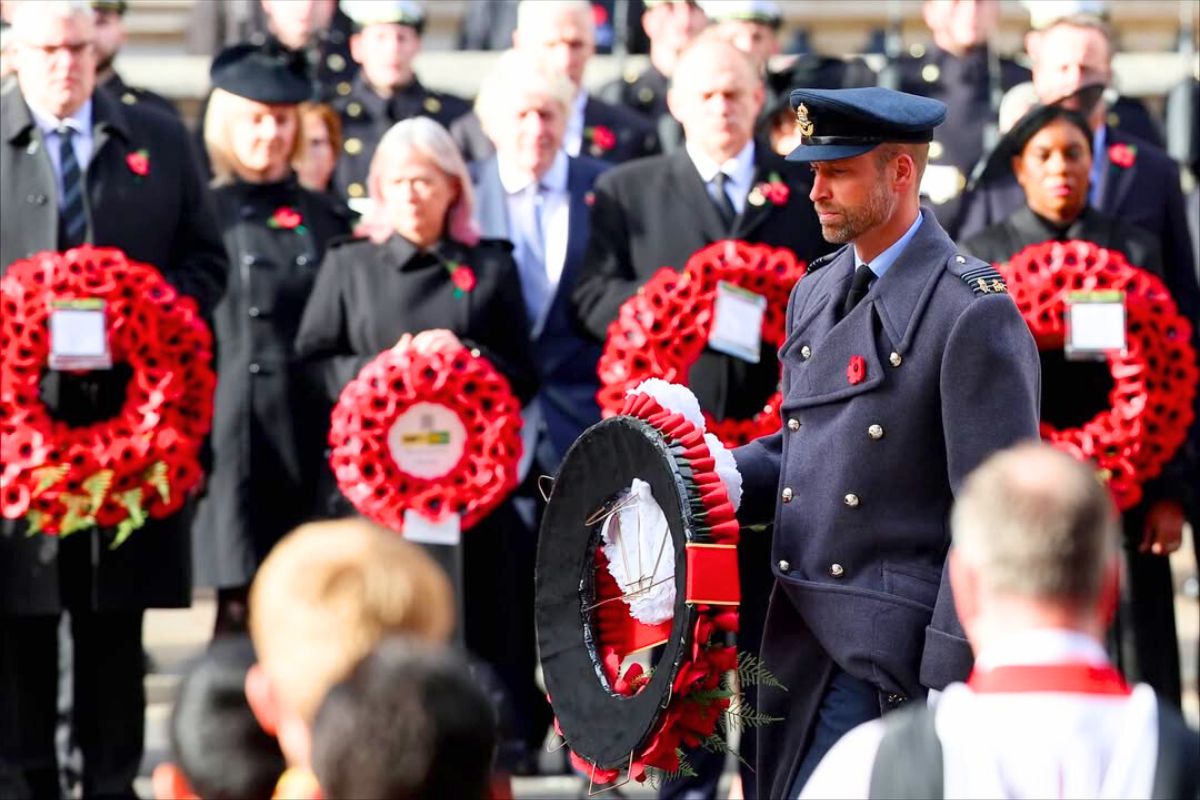
The Tradition of Wearing Poppies - Connection to Flanders Fields and Symbolism of Red Poppies
The red poppy became an enduring symbol of remembrance due to its association with the fields of France and Belgium, specifically Flanders Fields, where countless soldiers lost their lives during the First World War. Lieutenant Colonel John McCrae, a Canadian doctor, wrote his famous poem, "In Flanders Fields," after witnessing the poppies that grew over the graves of fallen soldiers on the Western Front. McCrae’s poignant verses highlighted the poppy as a symbol of hope and remembrance, linking it to the sacrifices made by those who served in the war.
The symbolism of the red poppy resonated widely and quickly became associated with the commemoration of lives lost in battle. Inspired by McCrae’s poem, French activist Anna Guerin championed the idea of the artificial poppies as a way to honor the fallen and raise funds for veterans. Her efforts led to the adoption of the poppy as a national symbol for Remembrance Day, further popularizing the flower as an emblem of both loss and resilience.
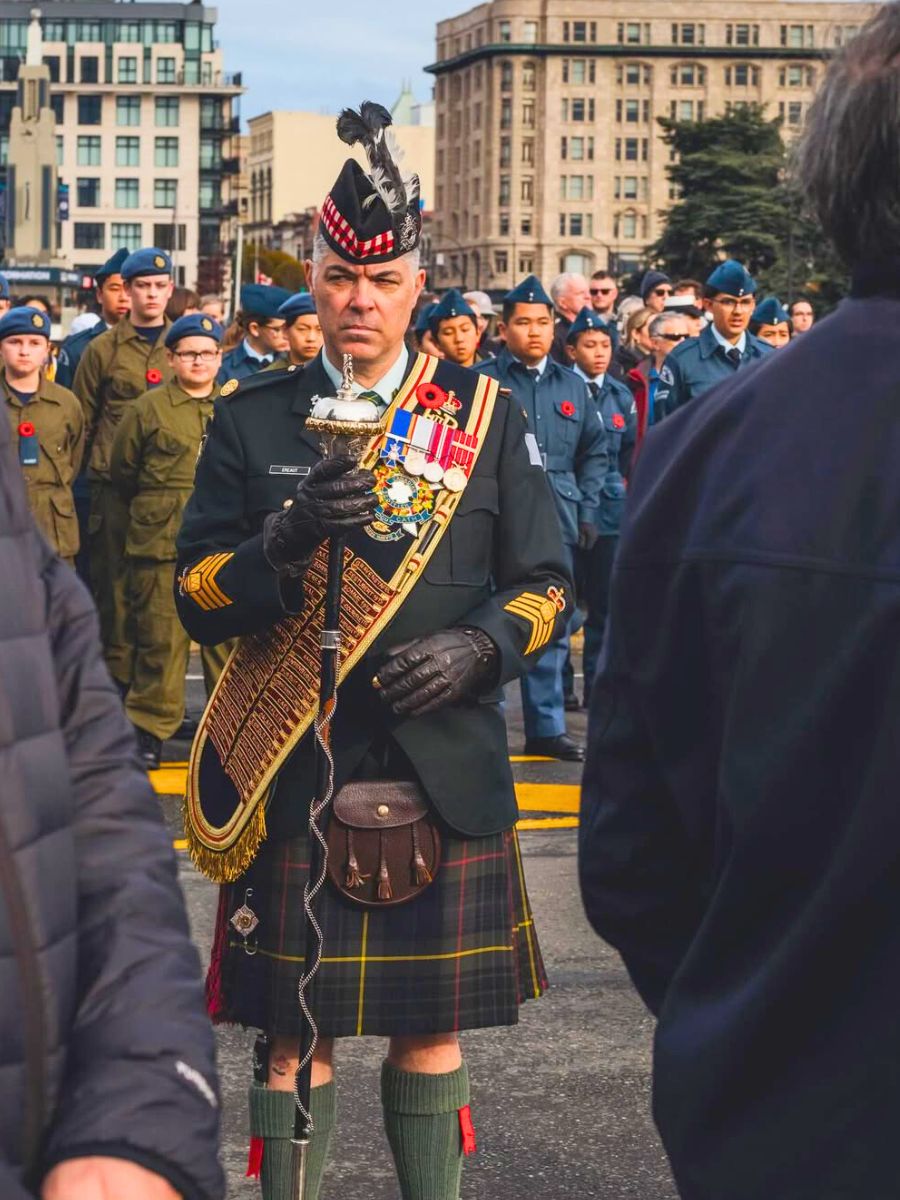
Photo: @jdariusz
Royals aren't the only ones wearing poppies on this holiday. The tradition of donning these flowers on November 11th began in 1921, when the Royal British Legion was founded, according to the organization's website. After World War I ended, poppies grew over the old battlefields and became seen as a "symbol of remembrance and hope." (This emotional connection between the flowers and the lives lost was memorialized in a 1915 poem by John McCrae).
Fundraising and Support for Veterans Through Poppy Sales
In addition to serving as a symbol of remembrance, the poppy is a vital tool for fundraising. Each year, the Royal British Legion’s Poppy Appeal generates funds through the sale of poppies, which are used to support veterans and their families. These contributions are directed toward a range of veterans affairs initiatives, including healthcare, housing, and financial assistance for those who have been affected by service in the Armed Forces.

The sale of poppies also supports important mental health services, addressing challenges faced by veterans as they transition back to civilian life. By purchasing and wearing poppies, the public not only honors the sacrifices of those who served but also directly aids in the welfare of veterans. This annual tradition reinforces the importance of remembrance and provides practical support to those who have given so much for their country.

Educational Efforts to Teach Remembrance Day Traditions
Efforts to instill the significance of Remembrance Day begin early in schools across the UK. Educational programs organized by the Royal British Legion and supported by local governments and schools ensure that younger generations understand the meaning behind Poppy Day, Veterans Day, and Memorial Day observances. Schools engage students in activities that honor the legacy of those who served, including discussions of historical events like the assassination of Archduke Franz Ferdinand and the beginning of world conflicts.
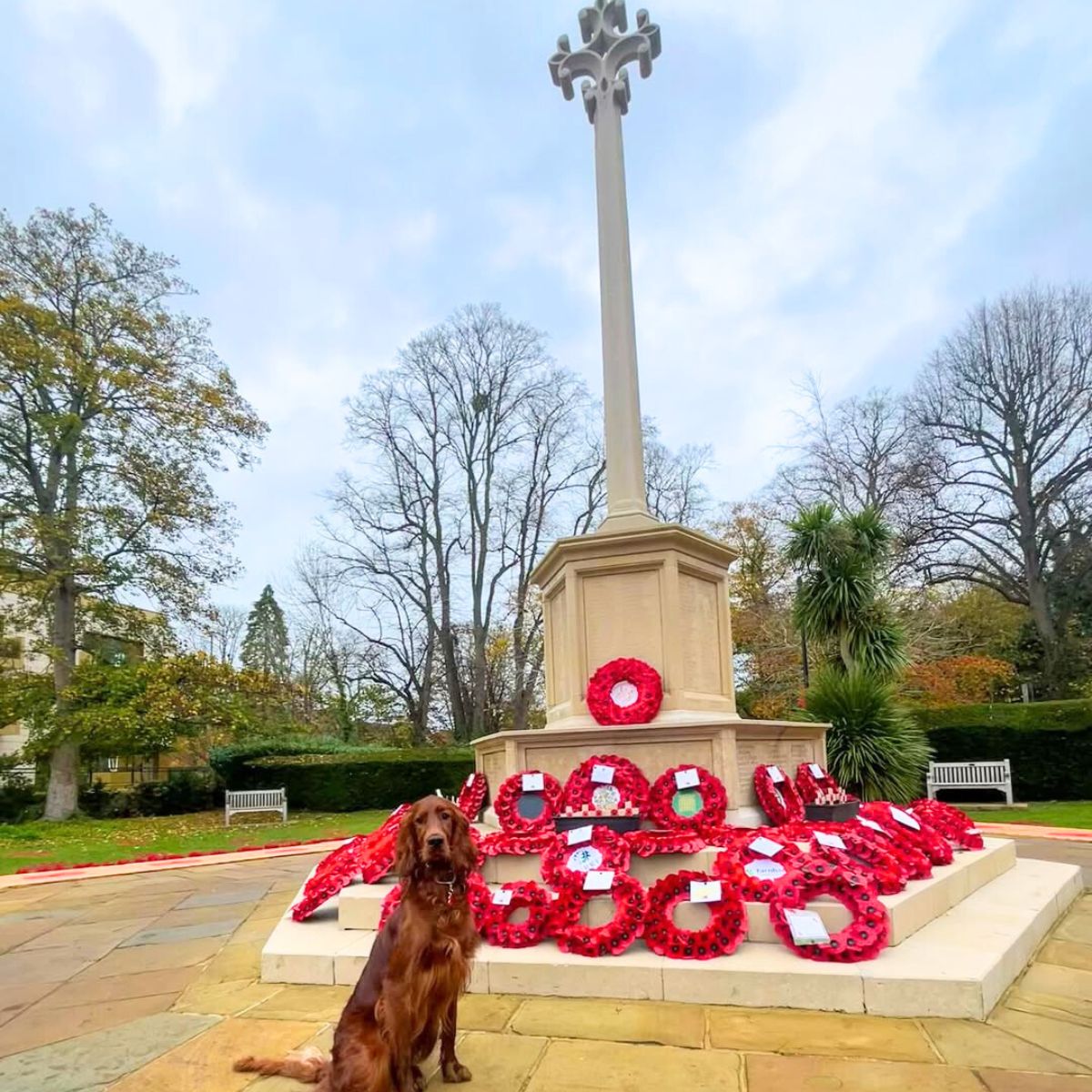
Photo: @rubyroseredsetter
In Northern Ireland and other regions, schools often commemorate Remembrance Day by creating learning materials, hosting discussions, and encouraging students to attend local memorial services. The Royal British Legion, along with the federal government, also supports special teaching resources that highlight the story of Anne Guerin, the early poppy campaigns, and the lasting impact of the red poppy.
The Lasting Impact of Remembrance Day and the Poppy Symbol
Remembrance Day has grown from its beginning as an observance of the 1918 armistice to a widely respected global commemoration of military sacrifice. The red poppy, with its four petals, remains a powerful symbol of remembrance thanks to the work of activists like Anne Guerin. This simple flower, which grows in former battlefields in France, represents the honor and sacrifices made by countless soldiers.

At Buckingham Palace and in communities around the Commonwealth, the anniversary of the first world war's end is a moment to reflect on the consequences of conflict and the value of peace. Remembrance Day has inspired a lasting legacy of honor for veterans worldwide, preserving the memory of the unknown soldier and all who served. This tradition, passed on through schools, ceremonies, and family observances, remains essential to teaching the history and significance of sacrifice.

